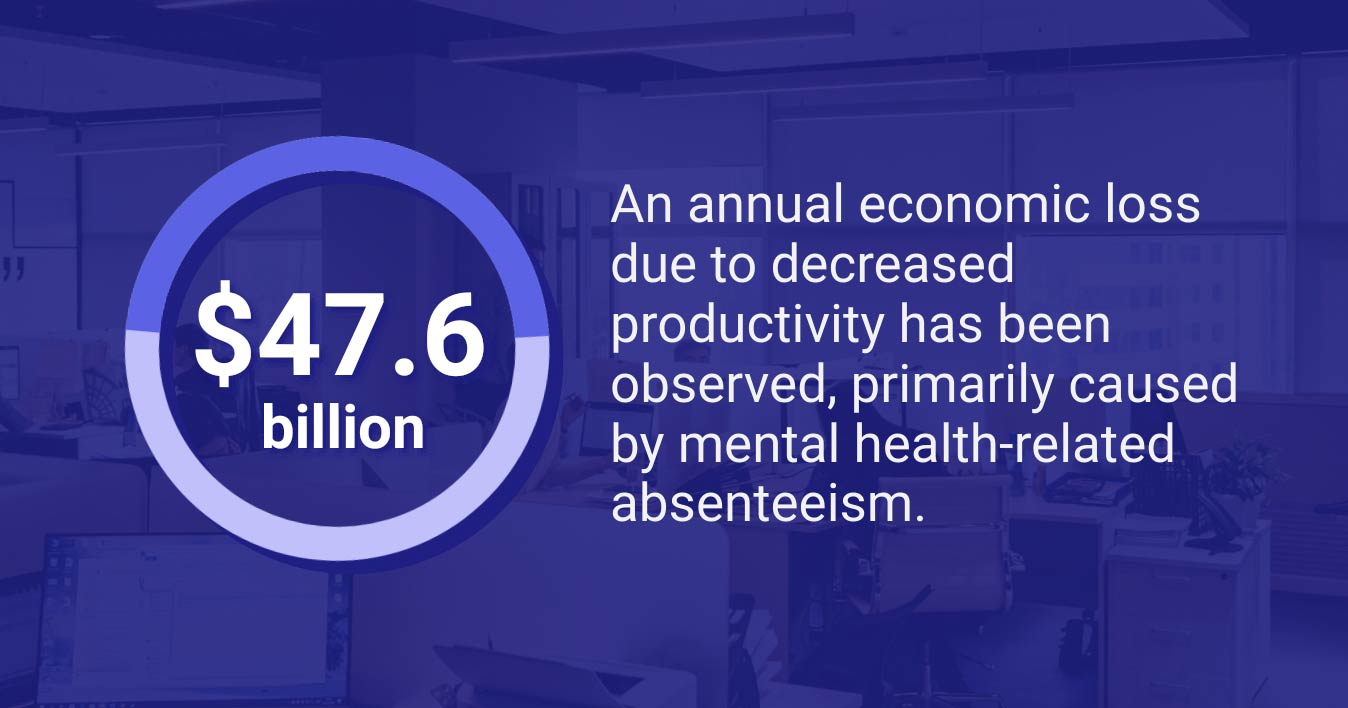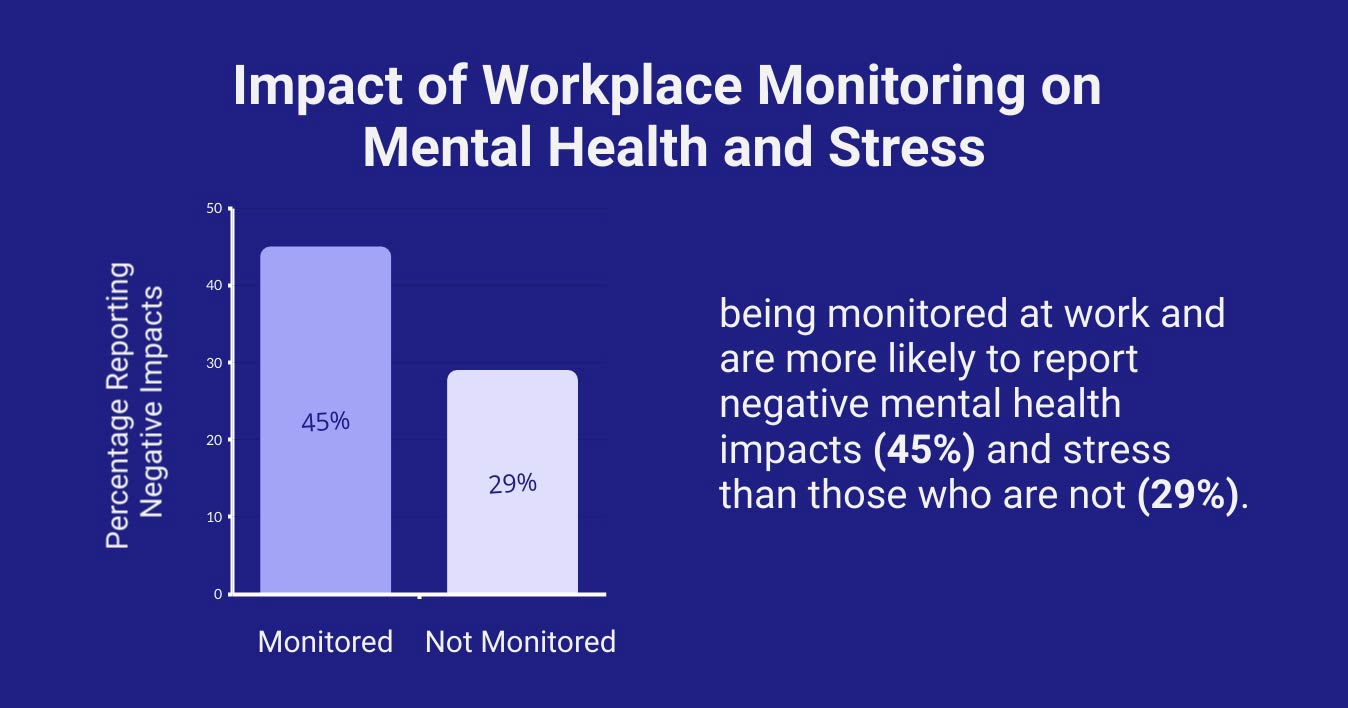Productivity Anxiety: Understanding the Stress and Reducing the Pressure

Healthy working environments and stimulating projects can provide structure, purpose, and security—all critical elements for navigating a world of change. However, several years of disruptions to the landscape of most modern workplaces have left employees anxious and tired.
With inflation and layoff fears clouding employee outlooks, an already burned-out workforce may struggle to meet expectations, worry about the consequences, and wonder if they can keep up in a fast-paced, competitive, and changing world of work. This fear and self-doubt can compound the pressure, negatively affecting wellbeing and productivity.
In this article, we’ll discuss the impact of productivity anxiety, dig into prevailing causes, and talk through some solutions to reduce the pressure.
What is productivity anxiety?
Productivity anxiety is the feeling that no matter how much you work or what you accomplish, you're doing enough, efficient enough, or good enough. It can can lead to feeling dissatisfied with progress or overwhelmed by a never-ending to-do list, and a fear of failing.
Unlike burnout, productivity anxiety isn't strictly an occupational phenomenon. People may feel overwhelmed by their obligations outside of work or underwhelmed by their progress toward personal goals.
No matter the source, when a person's drive to achieve is motivated by self-doubt or fear, it can lead to consistent psychological and physical stress.
Signs of productivity anxiety
As with other types of anxiety, how and the degree to which a person experiences productivity anxiety depends on unique internal and external factors. Most commonly, productivity anxiety can result in:
| Physical wellbeing symptoms: | Mental & emotional wellbeing symptoms: |
|---|---|
| Difficulty concentrating | Excessive worrying or constant nervousness |
| Exhaustion or fatigue | Inability to or feeling guilty when taking breaks |
| Trouble sleeping | Mood swings |
| Headaches, backaches, and muscle tension | Negative self-talk and overthinking |
| Increased heart rate during periods of stress/anxiety | Feeling a lack or loss of control |
| Increased feelings of apathy and demotivation |
Employees struggling with productivity anxiety can exhibit low-performance behaviors such as procrastination, task avoidance, and distraction seeking – and seemingly high-performance behaviors including working long hours, sweating the small details, and trying to control or perfect the outcomes of their work.
Coping with anxiety can lead to other behavior changes that negatively affect productivity, engagement, and wellbeing. A few common examples include:
- Putting work before wellbeing basics like eating and exercising
- Decreased self-esteem and increased need for external validation
- Increased irritability and impatience due to chronic emotional stress
- Reduced focus and creativity caused by cyclical disruptive thoughts and feelings
- Disengagement, withdrawal from responsibilities, and self-isolation
Impact of productivity anxiety in the workplace
Like strain on the body, unmanaged anxiety can roll up from the individual to impact team dynamics and even organizational cultures.
Increased absenteeism and presenteeism
According to Gallup researchOpens in a new tab, absenteeism due to mental health alone costs the economy about $47.6B annually in lost productivity. Workplaces with cultures prioritizing showing up over wellbeing contribute to an even greater problem: presenteeism.

Employees struggling with mental, emotional, or physical wellbeing may also still show up to work but be unable to work at their full capacity. While more complex to measure, a 2017 report from GympassOpens in a new tab that analyzed data from participants across 17 countries estimates presentism costs $1.5 trillion annually.
Decreased efficiency and innovation
Employees experiencing productivity anxiety are more likely to suppress their opinions, self-isolate, and miss goals or deadlines.
On a team scale, the quality of work may decrease as employees struggle to focus, make decisions, and collaborate. There may be increased friction and reduced innovation organization-wide as employees become risk-averse, fatigued, and disengaged.
Morale and cultural decline
As moods shift, energy wanes, and productivity declines, employees may find they are no longer motivated to keep pace in a results-driven culture. They may notice increasing conflict between groups and find that differing priorities and shortening tempers have escalated to a blame culture.
Wide-scale and continuous anxiety and stress in organizations typically manifest as:
- High cost of employee turnover rates
- Decreased engagement and wide-scale burnout
- Declining job satisfaction and morale
To end the cycle, let's examine a few primary reasons for productivity anxiety and how to combat them in the workplace.
What causes productivity anxiety?
Anxiety is a stress response to a potential or actual threat to wellbeing. There's a wide variety of workplace stress across the five types of wellbeing, but productivity anxiety is deeply rooted in how we depend on, measure, and value work.
Uncertainty & job insecurity
Uncertainty in the workplace can result from unclear project expectations or responsibilities, new work or technology, organizational change, and factors outside the office, such as national or global events.
Adobe's 2022 study "The Future of Time: Redefining productivity during uncertainty"Opens in a new tab, a survey of 10,000 people across eight global markets, found that 80% of respondents reported at least one global issue negatively impacting their productivity and overall job satisfaction. For 70% of all respondents, the top issues were economic instability and inflation.
Employees at all levels face uncertainty about their current position and prospects in a tight job market.
- Leaders are asked to provide reassurance and continued performance through rounds of layoffs, hiring freezes, and economic disruptions in already competitive marketplaces. As they tighten belts and focus on efficiencies, they ask employees to meet their same goals or stretch further, often with fewer resources, which adds pressure to the priorities and communication around work.
- Individual contributors have been contending with changes to their day-to-day operations for years. Rapid technological developments may have disrupted the trajectory of their work or introduced new learning curves and on-the-job training demands to keep pace. Many are looking to AI to reduce busy work and free up skilled employees, but it requires navigating a rapidly changing and controversial landscape of legal and ethical impacts, knowledge gaps, and novel use cases.
- Managers have to split their time between strategic work and supporting employees through changing organization landscapes, increasing burnout, workplace stress levels, and career development. They encounter uncertainty and new challenges more than most and often do not have formal training, resources, or support structures to navigate their responsibilities.
We depend on work to earn a living, obtain health insurance, and, under the right conditions, provide community and a sense of purpose. Being out of work can feel shameful and depressing, and unemployment can mean losing respectability and the ability to participate in society.
It's no wonder employees are feeling increased pressure to be self-reliant and of value. They may be more likely to suffer workplace stress to reduce risk, but their work quality will also suffer.
Find out how recognition combats economic uncertainty in this free guide!
As employees become risk-averse, data becomes more critical for decision-making and prioritization. Unfortunately, the traditional model for measuring productivity in employee or organizational performance introduces more uncertainty than it solves.
How we measure productivity
In its simplest model, productivity is a performance measure that compares the output of products to the input of resources. Business leaders focus on the efficiency of this process, with profits, returns, growth, and competitiveness directly linked to improving output relative to input.
Beyond the oversimplification, this model focuses on outputs and does not account for:
- Knowledge work and innovation require inefficiencies like finding information, trial and error, and time for input, iteration, and feedback.
- Defining reliable measures for quality of work or time spent are more complex factors to account for.
- Rapid technological progress can complicate measurement with extensive data or changes over time. Even the best tools introduce a learning curve.
Visibility and activity metrics—like hours worked, time spent on tasks, and the number of outputs (emails sent, calls made, tickets completed)—are easily measured through technology and tracked over time. However, they cannot capture the quality of work produced and can incentivize volume over impact.
You can incentivize short-term optimization through repeatable processes over long-term growth and innovation even when considering multiple activity metrics like projects completed and hours worked vs. resulting revenue.
In a survey of 18,000 desk workers, Slack reportedOpens in a new tab that 27% of executives measure productivity through visibility and activity metrics in 2023. 19% of executive respondents used achieving key performance indicators and goals, and 15% used cost metrics.
These measures also create friction between leaders measuring efficiency and employees completing the work and reporting on impact. This was never more clear than when leaders turned to employee monitoring tools during the pandemic.
Confused and alienated by unclear performance measures and increased scrutiny in their new remote work environment, many employees put more effort into performative workOpens in a new tab while others are overworked.
Both coping mechanisms only served to grind away work-life boundaries, mental health, job satisfaction, and trust between employees and employers.
Employee monitoring remains an issue post-pandemic. APA's 2023 Work in America SurveyOpens in a new tab found that 51% of respondents know they're being monitored at work and are more likely to report negative mental health impacts (45%) and stress than those who are not (29%).

While the rollout of these technologies was initially tied to visibility during the sudden shift to remote work, executives are monitoring key swipesOpens in a new tab as a measure of in-office visibility and organizational productivity.
Seven ways to reduce pressure
Organizational culture profoundly influences how employees think and behave. In Adobe's 2022 survey, 3 in 4 respondents (78%) indicated they wanted a more supportive work culture to motivate them to stay in their current role.
1. Promote rest and wellbeing. Educate employees on wellbeing benefits and strategies. Encourage employees to use their PTO and actively listen to and respond to challenges teams and individuals experience when managing workloads.
2. Create learning and development opportunities, such as working with an organization mentor, taking a class, or attending a conference.
3. Use a social recognition & reward program to create avenues for employees to recognize each other at the moment, tying their specific efforts to company values and the impact they made.
4. Promote flexible work policies to increase employee autonomy and empower employees to work when and where they are most effective.
Remember, managers are strong allies through uncertainty. 73% of employees in Adobe's survey said their managers are meeting or exceeding their expectations in providing support amid the uncertainty. Giving them the right tools and support can have ripple impacts. Try:
5. Implement manager training and make support a priority. Create development opportunities for aspiring managers and leaders.
6. Reduce priority overload by reviewing functional priorities and gauging how they align with your company's goals. Empower teams and employees to say no to ill-defined or low-priority work.
7. Use a continuous performance management process to manage productivity rather than measuring outputs. Define milestones to track and celebrate progress as much, if not more, than completion. Chunk out the work to make it less overwhelming and easier to define key performance indicators for quality of work.
"Employers can help reduce stress with transparency, humanity, and consistent conversations around the status of the business and workers' contributions to the organization's mission and goals."
Tips for reducing anxiety and doing more productive work
No matter your role in an organization, the best approach to curbing productivity anxiety is to develop healthy work habits and learn which activities fuel your best work.
Try to:
- Set realistic goals with an outcome mindset that ladders up to business goals.
- Create personal boundaries around your work and stick to them. It may mean signing off at a regular time or setting expectations around your communication preferences.
- Schedule rest into your day. This can look like short breaks throughout the day or a long lunch, whatever helps you recover. You must keep to that schedule the same way you attend meetings.
- Manage your energy, not your time. Assess your energy levels and understand what helps you refresh throughout your day. It might be a snack, a walk, or even a nap. Taking a step away to refresh often results in better work when you return.
- Have frequent check-ins to problem-solve, course-correct, and innovate throughout the work.
- Clear your mind and look after your body. Eat and sleep well, and make room to meditate, journal, or engage in any other activity that lets you declutter your headspace.
- Do self-assessments and reflections with your manager to capture and reflect on skills, capabilities, and progress.
Above all, remember that rest is productive. It can boost your creativity, innovative thinking, and problem-solving abilities. It also makes the time you spend on work more effective!
Conclusion
While the causes of unproductive anxiety at work can be daunting, the steps you can take to reduce the pressure are simple.
Amidst disruption, employees need well-structured work and growth opportunities to provide a sense of control, stability, and income. You can take the edge off uncertainty by reinforcing wellbeing behaviors, making room to rest, developing skills, and working with more agile performance management processes.
About the author
Alison Enzinna
A content strategist and innately curious person, Ali Enzinna has started exploring the working world, looking for opportunities to make big changes through small actions.